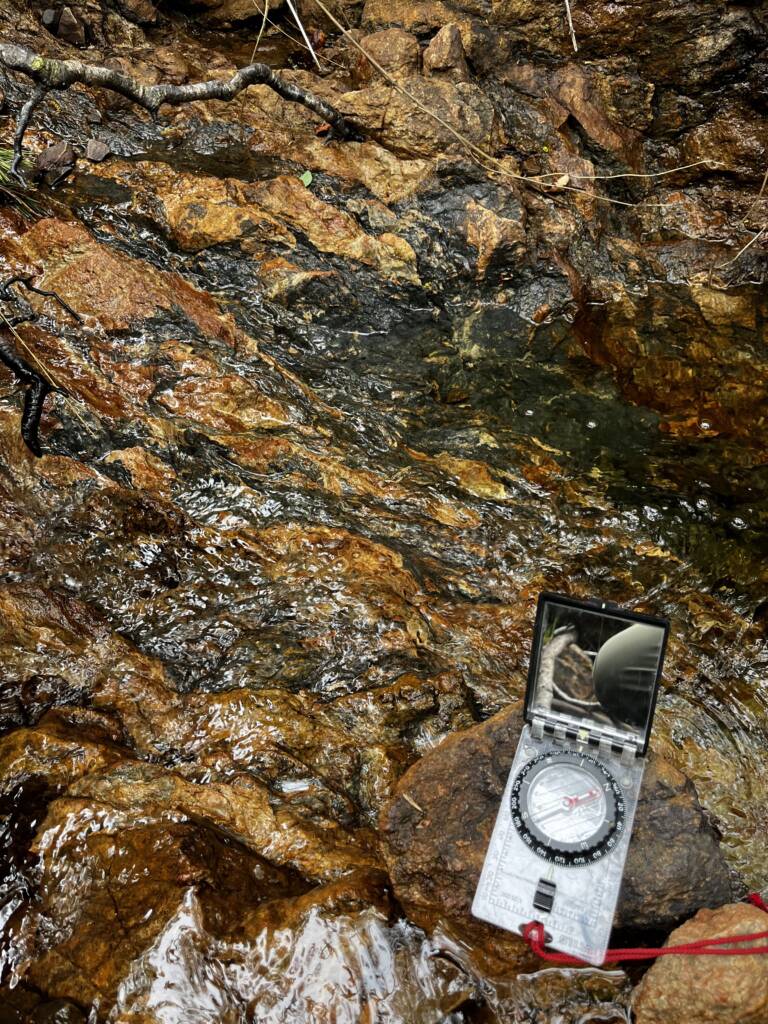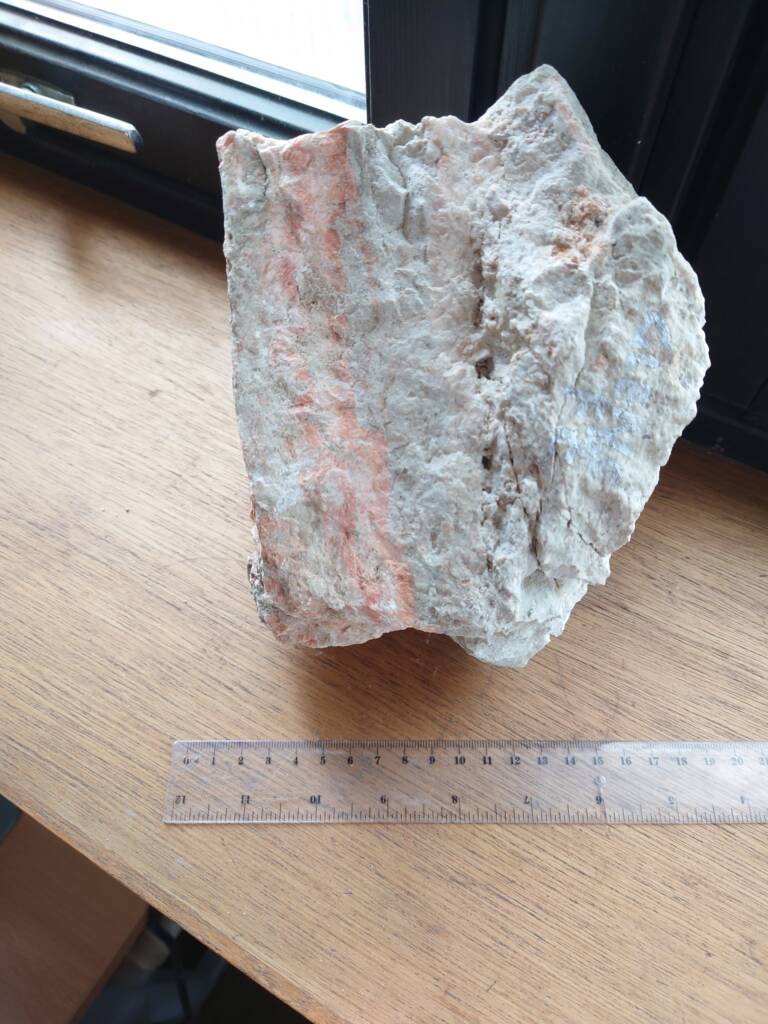IAP-25-066
Getting to the core of the Great Glen Fault
The Great Glen Fault (GGF), one of the largest strike-slip faults in N Europe, originated as an orogen-parallel fault during the Silurian-Devonian Caledonian Orogeny, associated with extensive plutonism. The fault system has been multiply reactivated since, including during the Devonian Acadian Orogeny, the late Carboniferous-Permian, Jurassic-Cretaceous, and Early Cenozoic. Decades of study have so far resulted in a broad but not exclusive consensus on the fault’s magnitude and direction of motion over geological time, though there are significant research gaps. These include an understanding of the rate of motion during the Caledonian-Acadian orogenies, the distribution and effect of fluid-rock interaction during subsequent re-activation, and generally the structural history of sites distant from “classic” geological study locations such as Rosemarkie on the Black Isle or Torcastle near Fort William.
The fault continues to grow in applied significance, particularly regarding hydro-electric infrastructure. Glacial erosion has created a geomorphological legacy of deep lochs along the GGF and nearby hanging valleys, ideal for pump storage hydro, a vital component of future UK energy storage capacity. The GGF core lies adjacent to the £1B Coire Glas pump storage facility at Laggan, where an exploratory tunnel has already been bored, and where the overall scheme is slated to commence electricity generation in 2031. The presence of a major fault core and damage zone and the inherent heterogeneity of fault zones present important engineering challenges related to stability and safety of its planned hydroelectric tunnels. The same concerns apply to any future infrastructure, which plausibly includes deep geothermal energy, given that the GGF also intersects the city of Inverness and towns such as Fort Augustus and Fort William, and granites of high heat production are intersected by the wider fault zone (e.g., Helmsdale, Fearn, Abriachan). Research into geothermal prospects of the GGF would align with ongoing efforts funded by EPSRC to better characterise the bedrock thermal properties of N Ireland, N Scotland and Norway.
Thanks to collaboration between Glasgow, the British Geological Survey (BGS), Durham, and Scottish and Southern Energy (SSE), you will work with rocks obtained from the Coire Glas exploratory tunnel, a generational opportunity to study fresh material from near the core of the GGF. You will also access multiple other sites where rocks of the GGF damage zone are exposed, tackling a range of outstanding pure and applied issues.
Your aim is to generate structural, compositional, geochemical, and potentially geochronological datasets to: 1) build on our current understanding of the nature and distribution of fault motion into new geographical areas, building a more coherent picture of fault activity and its implications for current and potential future engineering along the Great Glen; 2) address the extent and nature of fluid-rock interaction at different times in the GGF’s history and the likely effects on rock strength along the fault. Your study will provide invaluable information to inform rock mechanics studies, particularly of the Coire Glas site.
The project is intentionally broad in its aim and methodologies to allow the student freedom to collaboratively build a range of geological skills whilst maintaining a coherent and impactful overall narrative.


Click on an image to expand
Image Captions
Cataclasite with lithons of granite and schist which characterise the GGF at Creag Ruadh, near Ardgour. Photo by Bailey Lathrop (2023), with permission.,Extensive fluid-rock interaction in a sample from a heavily faulted portion of the Glensanda Superquarry. Photo by Iain Neill (2025)
Methodology
Visits to Coire Glas and to the BGS sample collection will allow characterisation and sampling of the GGF’s core and damage zone, whilst extensive field studies and various locations (e.g., Ardgour, Glensanda) will update mapping, generate new samples, and allow the building of an enhanced structural model of the onshore GGF.
Analysis at Glasgow, supported by the BGS and Durham, can include optical microscopy, X-ray diffraction, whole rock geochemistry, Scanning Electron Microscopy, and fluid inclusion studies. Outcomes will help assess the nature of fluid flow through the fault, and fluid-rock interaction over time, and how these differ in different parts of the core and damage zone. There may be opportunities to apply for and undertake stable isotope studies to further assess fluid origins.
Overall, these methods to characterise the fault and its history are an important starting point for rock mechanics work. For example, the description of fault rocks during ground investigations is poorly prescribed in the UK. Assessment of how different types and extents of fluid-rock interaction ultimately influence strength and stability for engineering purposes can be a very impactful project direction. You will exchange knowledge with Dr Audrey Ougier-Simonin and Dr Richard Haslam at the BGS in Nottingham throughout your work to establish the foundations for rock mechanics studies.
Another potential direction is to prepare samples for geochronological analysis. These may be invaluable where it is unclear what ages to assign fault rocks in various locations, and how they fit into the overall history of the fault zone. Geochronology methods will depend on the material collected, but U-Pb dating of calcite derived from fluid flow, at the BGS facilities in Nottingham, would be a priority. Another possibility would be to conduct U-Pb dating and trace element geochemistry on fault-bounded granitoid clasts, in order to investigate the provenance and transport of material in the fault zone. You will readily have access to extensive U-Pb zircon geochronology and geochemistry datasets from Silurian-Devonian plutons which are intersected by the fault, such as at Strontian, Abriachan, Linnhe, and Clunes.
SSE, on-site contractors or the BGS in Nottingham may be open to internship opportunities in the duration of the project.
Project Timeline
Year 1
Literature review.
Team and stakeholder familiarisation, Coire Glas and/or BGS visits.
Sample characterisation, petrographic and geochemical results from Coire Glas using the methods above as appropriate.
Field study of at least one additional site (e.g., Ardgour, Glensanda), subsequent sample characterisation using the methods above as appropriate.
Year 2
Continued petrographic and geochemical data collection.
Field and laboratory study of a further site.
Additional funding applications as appropriate (e.g. stable isotopes, U-Pb dating); preparation of samples for these; on site training and processing of samples (e.g., BGS at Keyworth, SUERC at East Kilbride).
Local workshop or conference and ongoing stakeholder engagement until project end.
Year 3
Continued on site training and processing of samples from funded studies, interpretation and wrap-up of all datasets, potential to organise a Great Glen Workshop to bring knowledge and expertise together as well as public engagement.
Year 3.5
Write-up and feedback cycle to be completed, career planning.
Training
& Skills
This project suits a hard rock geology candidate willing to combine field and laboratory approaches to geological problems. Ideally, you will have extensive field experience with deformed rocks, and if possible have had access to analytical facilities to generate geological data. You should be ambitious to be involved in one of Scotland’s largest infrastructure programmes of recent years, and the range of project and geological skills that you pick up will be much valued in industry or academia.
We will encourage training in structural analysis, geochronology, communication, and project management skills, some of which will be provided by NERC and IAPETUS courses. The University of Glasgow graduate researcher programme includes >20 days of training, seminars, and public engagement activity. We anticipate that there will be sustained academic and public interest in Coire Glas and the Great Glen which will give you experience of communicating across expert and non-expert audiences. There would be an opportunity to help develop a Great Glen Workshop to bring researchers and the public together towards the end of the PhD.
Full training will be provided for laboratory techniques, with the goal of you being able to develop interests in specific methodologies which contribute towards the overall aim. There will also be opportunities to lead or assist with funding applications, for example to local geological societies or to NERC’s Environmental Isotope Facility steering committee for stable or radiogenic isotope data.
The enthusiastic supervisory team across academia and the BGS, and end users, will give you the opportunity to grow from our collective >7 decades of Scottish geology expertise, as well as global perspectives across micro- to plate-scale studies of geological evolution, fault mechanics, geochronology, and magmatism. You will join a tight-knit cohort of geology-focused postgraduate researchers in Glasgow, including MSc by Research students working largely on Scottish geology problems, providing additional mentoring opportunities.
References & further reading
https://coireglas.com
Stoker 1983: https://doi.org/10.1144/sjg19010067
Smith and Watson 1983: https://doi.org/10.1130/0091-7613(1983)11%3C523:SATOMO%3E2.0.CO;2
Rogers et al. 1989: https://doi.org/10.1144/gsjgs.146.3.0369
Stewart et al. 1999: https://doi.org/10.1029/1998TC900033
Stewart et al. 2001: https://doi.org/10.1144/jgs.158.5.821
Mendum and Noble 2010: https://doi.org/10.1144/SP335.8
Le Breton et al. 2013: https://doi.org/10.1144/jgs2012-067
Kemp et al. 2019: https://doi.org/10.1180/clm.2019.25
Milne et al. 2023: https://doi.org/10.1144/jgs2022-076
Tamas et al. 2023: https://doi.org/10.1144/jgs2022-166
Becker 2023: https://vtechworks.lib.vt.edu/handle/10919/115144
de Jongh et al. 2024: https://www.taylorfrancis.com/reader/read-online/9848911b-fb82-4e0c-8cfb-9fa812ee13e1/chapter/pdf?context=ubx

